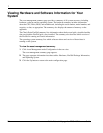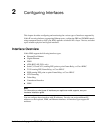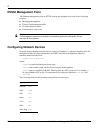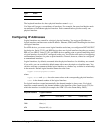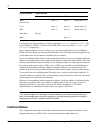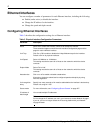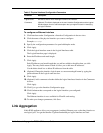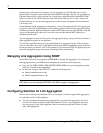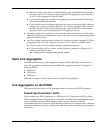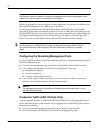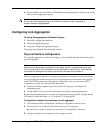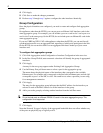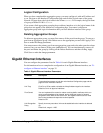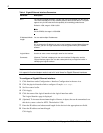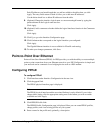
2
36 Nokia Network Voyager for IPSO 4.0 Reference Guide
balancing across the ports. For example, you can aggregate two 10/100 mbps ports so they
function like a single port with a theoretical bandwidth of 200 mbps, and you can aggregate two
Gigabit Ethernet ports so they function like a single port with a theoretical bandwidth of 2000
mbps. If you have only 10/100 interfaces and need a faster link but can’t or don’t want to use
Gigabit Ethernet, you can use link aggregation to achieve faster throughput with the interfaces
you already have.
Another benefit of link aggregation is redundancy—if one of the physical links in an aggregation
group fails, the traffic is redistributed to the remaining physical links and the aggregation group
continues to function. IPSO distributes the outbound IP traffic across the physical links using the
source and destination IP addresses. It uses the source and destination MAC addresses to
distribute non-IP traffic.
You can aggregate as many as four ports in one aggregation group, and you can have as many as
eight aggregation groups on one appliance.
You can hot swap NICs that have ports participating in an aggregation group. If the group has
ports on other NICs, the traffic is distributed to those ports and the aggregation group continues
to function when you remove a NIC in this manner. If you reinsert the NIC, the appropriate ports
rejoin the aggregation group and resume forwarding traffic automatically.
Managing Link Aggregation Using SNMP
Nokia IPSO systems use a proprietary SNMP MIB to manage link aggregation. To incorporate
link aggregation into your SNMP-based management, perform the following tasks:
Copy the file NOKIA-IPSO-LINKAGGREGATION-MIB.txt to your management system.
This file is located at /etc/snmp/mibs/.
In Network Voyager or the IPSO CLI, enable the following traps:
Enable lamemberActive traps
Enable lamemberInactive traps
Note
IPSO does not use the standard IEEE8023-LAG-MIB to support link aggregation.
Configuring Switches for Link Aggregation
Observe the following considerations when you configure a switch to support link aggregation
in combination with a Nokia appliance:
You must configure the appropriate switch ports to use static link aggregation. (On Cisco
switches, this means you must enable EtherChannel.) That is, if you aggregate four ports
into one group on your Nokia appliance, the four switch ports that they connect to must
static link aggregation.



